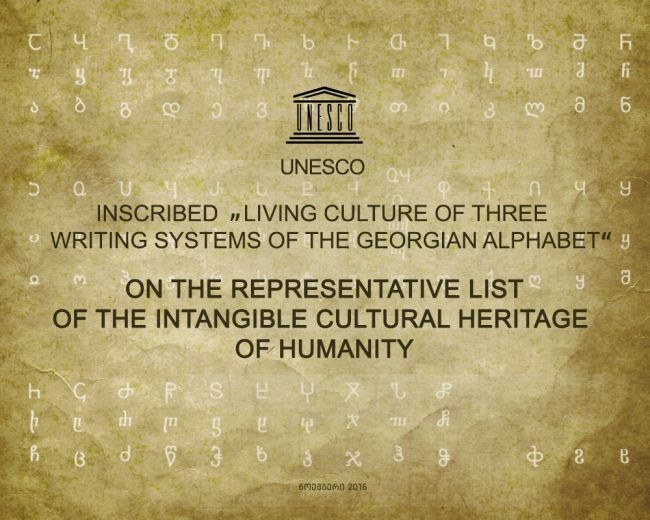2016-11-30

This decision was made on November 30, at the 11th session of the UNESCO Intergovernmental Committee for Cultural Heritage, held in Addis Ababa, Ethiopia.
At the committee's session, which is scheduled for November 28 through December 3, the Georgian side is represented by Ecaterine Siradze-Delaunay (Georgia's Permanent Delegate to UNESCO), Nikoloz Antidze (General Director at the National Agency for Cultural Heritage Preservation of Georgia), Ketevan Kandelaki (Secretary General of the Georgian National Commission for UNESCO at the Foreign Ministry), Vakhtang Jaoshvili (Georgia's Permanent Representative to the African Union), Rusudan Mirzikashvili (Head of UNESCO and International Relations Unit at the National Agency for Cultural Heritage Preservation of Georgia), and Konstantine Natsvlishvili as an expert for the National Agency for Cultural Heritage Preservation of Georgia invited by the UNESCO Committee for Cultural Heritage.
Said nomination was prepared with the support of the Georgian Government and under the leadership of the National Agency for Cultural Heritage Preservation of Georgia, and it was endorsed at the international level by the Ministry of Foreign Affairs.
The preparation of the nomination involved the Institute of Linguistics, Ivane Javakhishvili State University in Tbilisi, the Georgian National Academy of Sciences, the National Center of Manuscripts, the National Archives of Georgia, the National Library of Georgian Parliament, the National Museum, the Patriarchate of Georgia, experts in intangible material heritage, and individual linguists. Earlier, on March 19, the Continuous Culture of the Three Ancient Georgian Writing Methods were recognized as national monuments of intangible heritage.
The continuous culture of the three ancient Georgian scripts are a result of the coexistence of the three writing systems ("mrglovani", "nuskhuri", and "Mkhedruli"), which have served various cultural and social purposes and have their roots in the centuries-long evolution of Georgian script. The three methods of writing boast a diversity of usage and a continuous culture of coexistence, literary heritage and culture, alphabet teaching methodology (Dedaena, Iakob Gogebashvili's method for compiling alphabet textbooks), topography, and graphics and media design. The unity of the three methods has preserved the lexis and grammar of Georgian literary language, which span fifteen centuries and form the foundation of the development of Georgian literary language.
The recognition of the three Georgian writing methods by UNESCO as monuments of intangible cultural heritage is extremely important to Georgian society and diaspora, as well as to the cultural and educational institutes of Georgia and the country in general, also for promoting the image of Georgia as a country with a highly developed culture.
This nomination contributes to the preservation of Georgia's cultural diversity, strengthening of social tolerance and sociocultural ties based on respect, promoting Georgian studies at the international level, boosting cooperation between research institutes and organizations specializing in the Georgian language, alphabet, and literature, which makes the Georgian alphabet in general a powerful defense mechanism.











